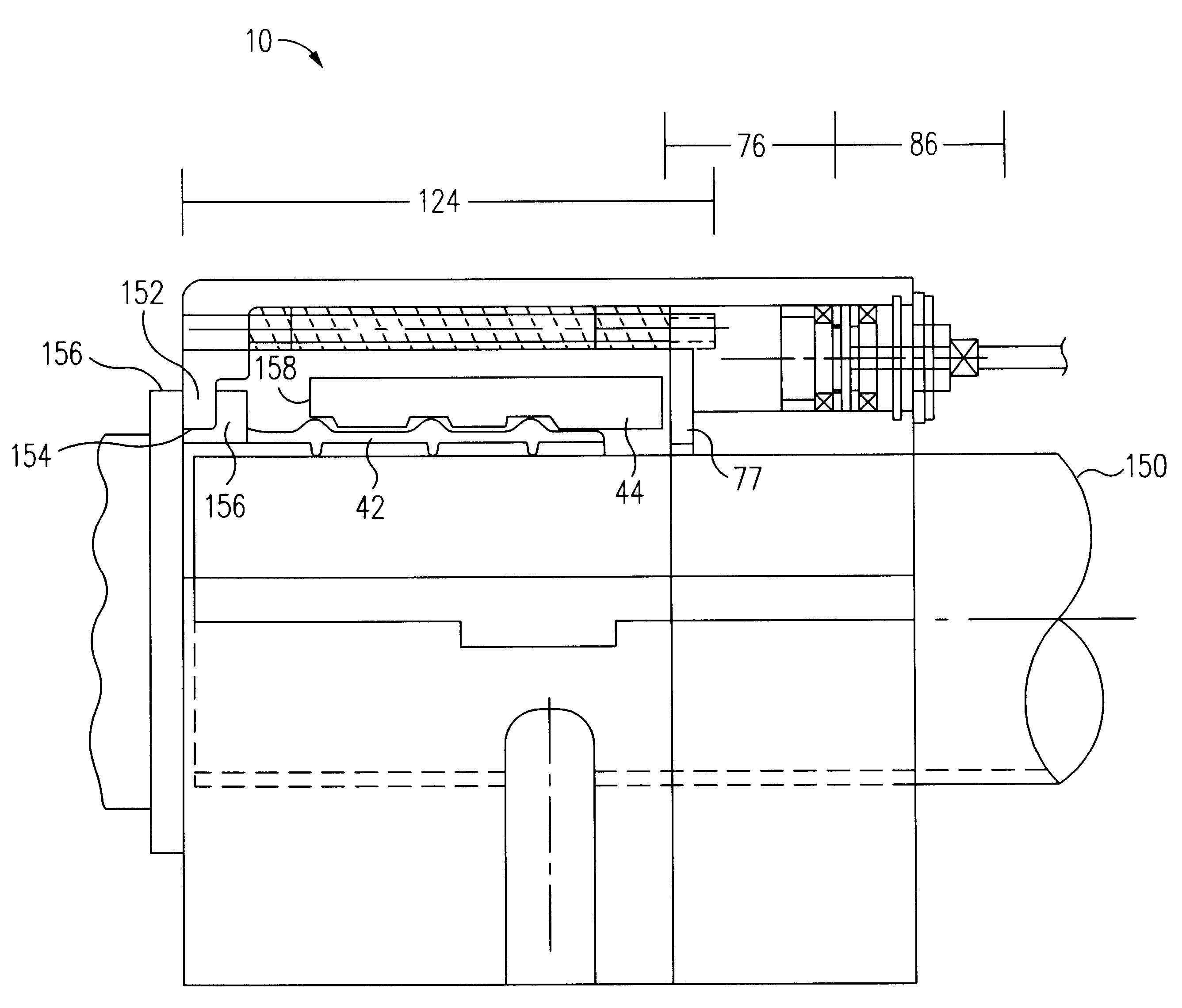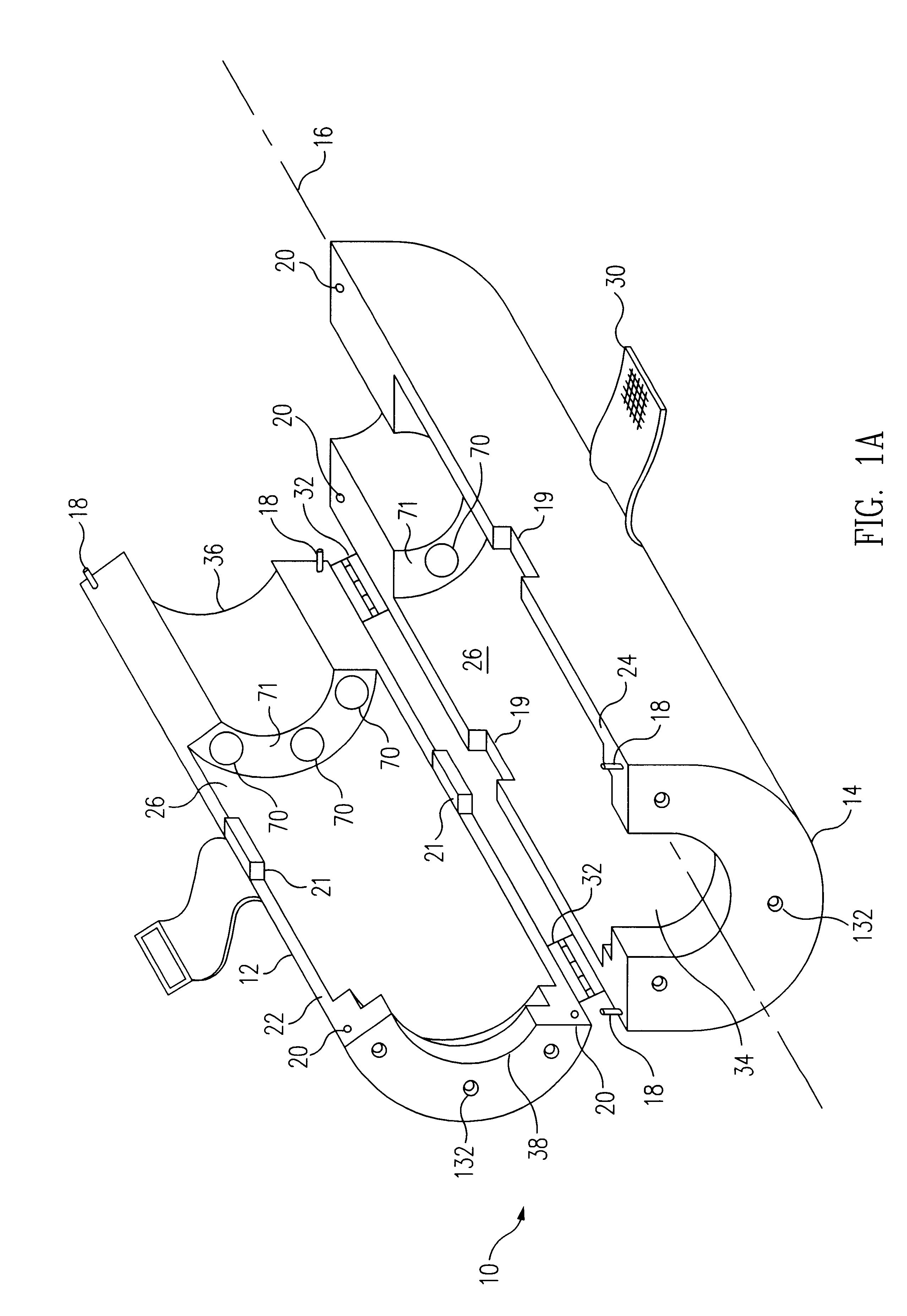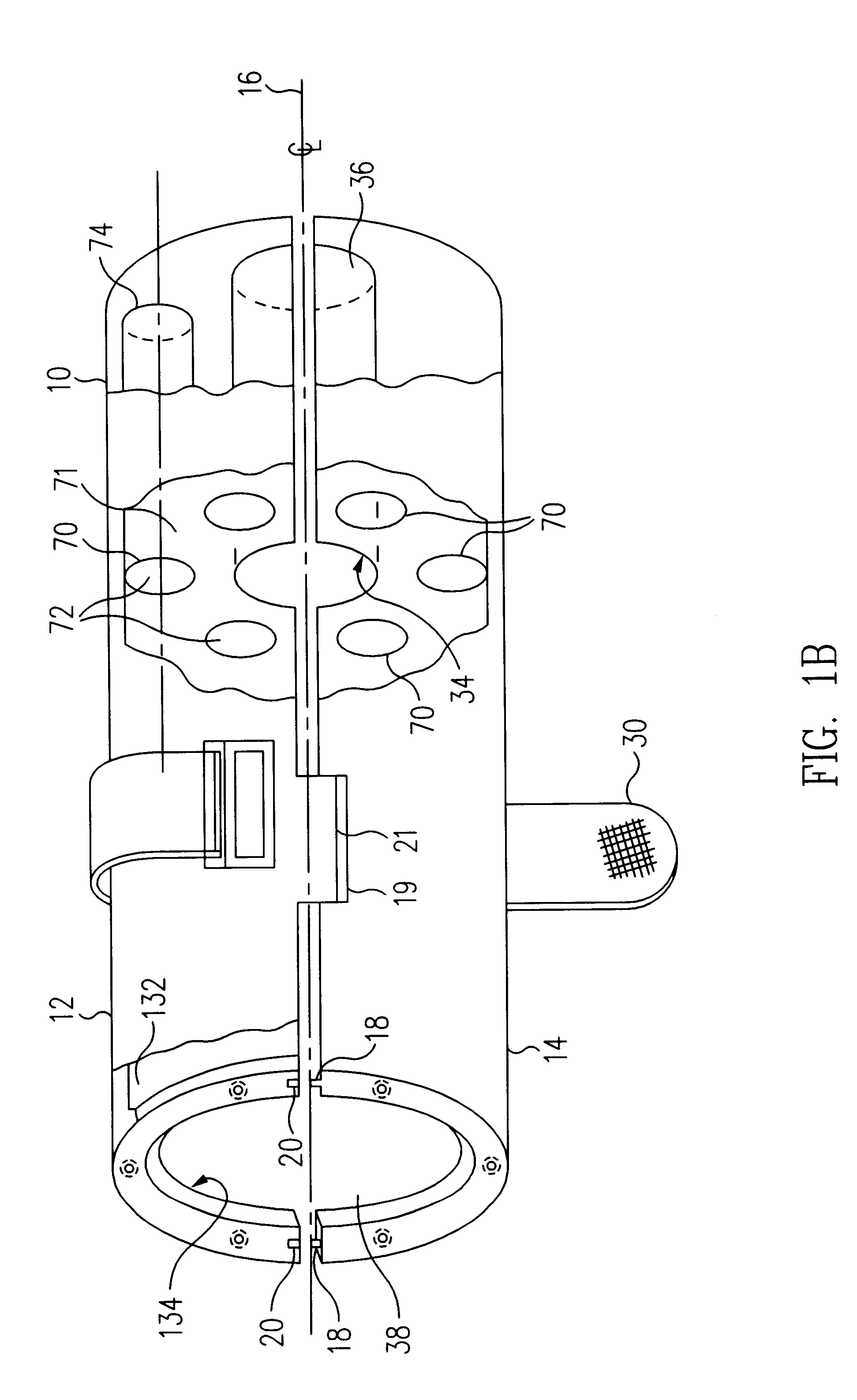Swaging tool with multiple pushers
- Summary
- Abstract
- Description
- Claims
- Application Information
AI Technical Summary
Benefits of technology
Problems solved by technology
Method used
Image
Examples
Embodiment Construction
Embodiments of the present invention will be described with reference to the aforementioned figures. These figures have been simplified for ease of understanding and describing the embodiments.
FIGS. 1A and 1B show an open perspective view and a substantially closed side view, respectively, of a swaging tool in accordance with an embodiment of the present invention. Swaging tool 10 includes a first housing section 12 and a second housing section 14. Swaging tool 10 is broadly symmetrical about a central axis 16. Thus, the description of swaging tool 10 is directed to only one housing section of the tool, with reference to the other housing section, only when necessary to describe a feature of the invention, since the other section is structurally and functionally the same. Each housing section 12 and 14, as well as many of the features included in the housing, as described below, may be formed using conventional machining and milling techniques, for example electrical discharge machi...
PUM
| Property | Measurement | Unit |
|---|---|---|
| Force | aaaaa | aaaaa |
| Pressure | aaaaa | aaaaa |
| Circumference | aaaaa | aaaaa |
Abstract
Description
Claims
Application Information
 Login to View More
Login to View More - R&D
- Intellectual Property
- Life Sciences
- Materials
- Tech Scout
- Unparalleled Data Quality
- Higher Quality Content
- 60% Fewer Hallucinations
Browse by: Latest US Patents, China's latest patents, Technical Efficacy Thesaurus, Application Domain, Technology Topic, Popular Technical Reports.
© 2025 PatSnap. All rights reserved.Legal|Privacy policy|Modern Slavery Act Transparency Statement|Sitemap|About US| Contact US: help@patsnap.com



